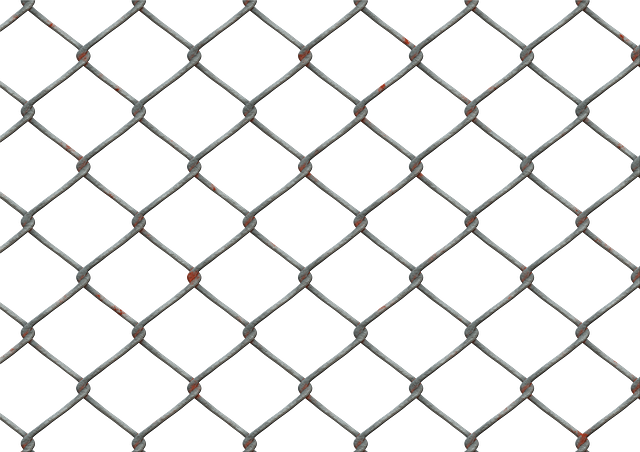Fences serve not just as boundaries but as a design element enhancing outdoor spaces. To ensure they make a lasting impression, consider fence staining and sealing. This comprehensive guide explores the benefits of fencing treatments, from improving aesthetics to protecting wood. We’ll walk you through understanding stain types, preparing your fence, choosing the right color, applying stains, and sealing for durability. Learn these steps, and your wooden fence will be a vibrant, protected feature for years to come.
- Understanding Fence Staining: Benefits and Types
- Preparing Your Wooden Fence for Staining
- Choosing the Right Stain: Color and Finish
- Applying Stain: Step-by-Step Guide
- Sealing for Protection: Importance and Process
- Maintenance Tips for Longevity
Understanding Fence Staining: Benefits and Types
Fence staining is an essential maintenance practice for wooden fences, offering both aesthetic and protective advantages. By applying a coat of stain, homeowners can transform their outdoor spaces while safeguarding the longevity of the fence. The primary benefits include enhanced visual appeal, as stains come in various colors to suit different preferences and architectural styles. Moreover, they provide a barrier against the elements, shielding the wood from damaging UV rays, rain, and snow, which can cause fading and rot over time.
There are several types of fence stains available, each with unique characteristics. Water-based stains are popular for their low odor and quick drying time, making them user-friendly. Oil-based options, while taking longer to dry, offer superior color depth and protection against water damage. Additionally, semi-transparent stains allow some grain visibility, preserving the natural look of the wood, while solid stains provide complete coverage, blocking out sunlight to prevent fading.
Preparing Your Wooden Fence for Staining
Before applying any stain or sealer to your wooden fence, proper preparation is key. Start by thoroughly cleaning the fence to remove any dirt, dust, or debris that might hinder the staining process. Use a pressure washer or a brush with mild detergent and water to ensure a clean surface.
Inspect the wood for any damaged or rotten sections. Repair or replace these areas to prevent further deterioration. Sanding the fence slightly can also help create a smoother surface for the stain to adhere to evenly, ensuring long-lasting results.
Choosing the Right Stain: Color and Finish
When it comes to enhancing your wooden fence, selecting the perfect stain is a crucial first step. The color and finish you choose will not only impact the aesthetics but also the protection provided against elements like UV rays, moisture, and fungal growth. Opt for stains that offer UV resistance to prevent fading and maintain vibrant colors over time.
Consider semi-transparent or transparent stains if you prefer to keep the natural grain and texture of the wood visible while adding a protective layer. These options allow light penetration, showcasing the wood’s beauty without obscuring it. On the other hand, solid color stains offer complete coverage, providing a uniform appearance and hiding any imperfections in the wood. Choose from various shades, ranging from earthy tones to vibrant hues, to match your personal style and complement your outdoor space.
Applying Stain: Step-by-Step Guide
Applying Stain: A Step-by-Step Guide
1. Preparation: Before applying any stain, ensure your wooden fence is clean and free from dust, dirt, or existing finish. Sand any rough spots to create a smooth surface for even stain absorption. Repair any damaged sections to maintain the structural integrity of your fence.
2. Stirring and Application: Stir the stain thoroughly to ensure uniform color. Use a clean brush or roller, depending on the size and design of your fence. Apply the stain in long, even strokes, working from top to bottom. Be sure to cover all surfaces evenly, paying special attention to corners and crevices. Allow the first coat to dry according to the manufacturer’s instructions before adding additional coats for desired shade.
Sealing for Protection: Importance and Process
Sealing is an essential step in fence staining and maintenance, offering a protective layer against the elements. It acts as a barrier, guarding against water, UV rays, and other environmental factors that can damage wood over time. This process involves applying a special coating to the fence’s surface, filling in pores and crevices, and creating a smooth finish.
The benefits are clear: sealed fences not only look more appealing but also last longer. Sealing helps prevent fading, cracking, and rot, ensuring your wooden fence remains strong and sturdy. It’s a simple yet powerful way to protect your investment, keeping it looking as good as new for years to come.
Maintenance Tips for Longevity
Regular maintenance is key to extending the life of your stained and sealed wooden fence. After initial staining, a protective sealer should be reapplied every one to two years, depending on factors like weather exposure and traffic. This step prevents fading, peeling, and other damage caused by UV rays and moisture.
In between sealings, keep your fence clean and free of debris to avoid clogging pores in the wood. Use a soft brush or sponge with mild soap and water to gently wash away dirt and grime. Additionally, inspect your fence regularly for signs of rot, cracks, or damaged boards, repairing these issues promptly to prevent further deterioration.
